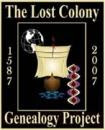 Can I possibly relate my scientific background to American History? Quite possibly, that answer is yes. My reasoning is chemical in nature. To begin a reaction, you take two chemical compounds, heretofore unrelated, mix them together, and observe the reaction. The end products quite likely include a totally unique compound not easily identifiable chemically with the reactants. Sodium is a metal that explodes on contact with water and chlorine is a green, poisonous gas. Together, however, they make NaCl or common table salt that we eat, indeed, absolutely need for our survival! Ironically, two deadly ideas can give you something unique and even useful. Same with history.
Can I possibly relate my scientific background to American History? Quite possibly, that answer is yes. My reasoning is chemical in nature. To begin a reaction, you take two chemical compounds, heretofore unrelated, mix them together, and observe the reaction. The end products quite likely include a totally unique compound not easily identifiable chemically with the reactants. Sodium is a metal that explodes on contact with water and chlorine is a green, poisonous gas. Together, however, they make NaCl or common table salt that we eat, indeed, absolutely need for our survival! Ironically, two deadly ideas can give you something unique and even useful. Same with history.Take for instance our present work with determining what happened with North Carolina's native inhabitants of Hatteras Island and the long unanswered question of the "Lost Colonists." What were the Indians like that we see in the 18th-century deed records? Were they products of the "Lost Colonists" (now, more appropriately termed "Abandoned Colonists") and the local Croatoan Indians of Hatteras Island?
The natives along the mainland viewed Europeans as deadly as that Chlorine gas while Europeans (especially Ralph Lane) saw the natives as Sodium. Could these two come together and make such a mild compound as salt? Maybe.
John White certainly was not as destructive as Lane. When he brought his 100+ colonists in 1587, they intended to settle down, not privateer against the Spanish as the militant Ralph Lane had desired. Still, others believe that the English government might have had a hidden agenda, to seek Sassafras and they have adequately demonstrated that the medicinal properties of that tree were quite valuable for a short period of time that coincided with Sir Walter Ralegh's (also involved in merchandising Sassafras) colonization period, even that Samuel Mace returned to the area in 1602 to seek it out. Indeed, the English government may have abandoned search efforts for the colonists to instead search for the tremendously valuable Sassafras. "Follow the dollar," says Dr. Dudley. It hasn't steered me wrong yet. Another point that I should make here is also that Cape Hatteras was considered by mariners of the day as a deadly place to go because of the dangerous shoals, contributing even further to the relative isolation of the Croatoan. Mariners likely viewed Hatteras as the volatile crucible of our chemical experiment. Eighteenth-century newspaper articles adequately demonstrate this.
The Sassafras "craze" was a short "bubble" that eventually burst, but not until the colonists were long forgotten. Still, only a few decades went by before Englishmen from Virginia began filtering down the Outer Banks repopulating the area. By then, natives were mostly reduced to as much as 10% of their former numbers (disease has had a widespread devastation all across the contact areas in America).
Without a doubt, some of those colonists lived with the natives of Croatoan, now known as Hatteras. That's where John White expected to find them because that's where they told him to find them. Unfortunately, White was prevented from returning to Croatoan by an ever-irritable phenomenon called a "nor'easter" and he never saw his daughter nor granddaughter, Virginia Dare, again. And, of course, Mace was busy in 1602 looking for plants instead of people (if I need rescue, don't send Samuel Mace). No mention was made of Hatteras' inhabitants by the English who came down in the 17th century... it was up to John Lawson, in 1701, to find the blue-grey-eyed Indians on Hatteras and claimed that "several of their Ancestors were white People, and could talk in a Book..." and also, in Lawson's words, "this Settlement miscarry'd for want of timely Supplies from England; or thro' the Treachery of the Natives, for we may reasonably suppose that the English were forced to cohabit with them, for Relief and Conversation; and that in process of Time, they conform'd themselves to the Manners of their Indian Relations. And thus we see, how apt Humane Nature is to degenerate."
In my opinion, however, the Indians of Hatteras were not a degenerative end-product of the combination of the two "explosive" elements from our traditional version of the story (related in its present form since the 1939 beginning of the play that rocketed Andy Griffith to stardom). They were the salt of the earth, so to speak. They were the mild testimonial of what we all are capable of... getting along when we try. Lawson was better than most of his peers, but he was still biased toward English (later, American) viewpoints of the Indian "savage." Sadly, the winner writes history, as they say.
This may not have been the perfect analogy for the chemical reaction, for the Croatoan were never really the "explosive" enemy of the early colonists. But, the end-products were indeed something unique. For a time, a handful of Englishmen may have experienced life in a simpler form. They may have forgotten the struggles of modern existence and lived a pastoral life with friends. The romantic in me wants to see it that way. The historian/scientist in me will present the findings, whatever they might be. But, there's still hope.



